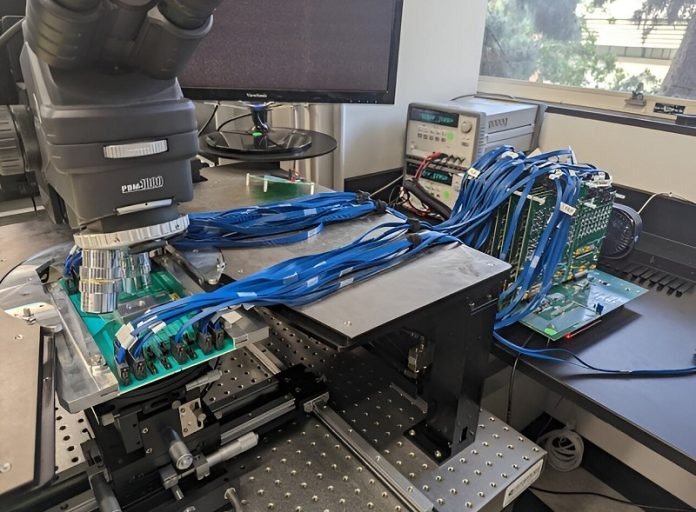
In a world where digital technology dominates, a group of researchers has made a groundbreaking leap in the realm of analog computing.
Their latest creation?
A new kind of analog chip that promises the accuracy of digital devices while offering the speed and energy efficiency of analog systems.
This exciting development was detailed in a paper titled “Programming memristor arrays with arbitrarily high precision for analog computing,” published in the prestigious journal Science.
Analog signals are everywhere around us — in the images captured by cameras, the sounds we hear, and even the temperature changes we feel.
However, for computers to process this information, it needs to be converted into a digital format.
This conversion process can be slow and energy-consuming, which is not ideal for situations requiring instant decision-making, like in autonomous vehicles.
Enter the memristor, a tiny yet mighty component that’s key to this new analog chip’s abilities. A memristor can store and process data very efficiently, making it perfect for this application.
The team, led by Professor J. Joshua Yang from the USC Viterbi School of Engineering, has fine-tuned these memristors to achieve unparalleled precision.
This new circuit and architecture designed by Yang’s lab could significantly broaden the scope of memristor applications.
Previously, memristors were seen as suitable only for tasks requiring low precision, such as certain types of neural networks. Now, they can be used for much more complex computing tasks, thanks to this innovation.
What makes this development even more exciting is its versatility.
According to Professor Yang, this approach can also enhance other memory technologies, such as magnetic memories found in hard disk drives and phase change memories used in CDs.
Programming an analog device accurately and quickly has always been a challenge. However, Yang’s team has come up with a smart circuit architecture and algorithms that solve this issue.
This breakthrough means analog computing could become a much more attractive option for various applications, offering the efficiency and speed of analog systems with the accuracy of digital ones.
This is big news for fields like artificial intelligence (AI) and machine learning (ML), where training neural networks has traditionally been a costly and digitally intensive process.
Beyond AI and ML, these advancements could transform scientific computing, including weather forecasting, by making it faster and more precise.
In essence, this new analog chip represents a significant step forward in computing technology, blending the best of both analog and digital worlds for a smarter, quicker, and more energy-efficient future.
The study was published in the journal Science.



